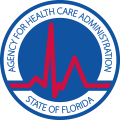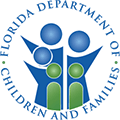Bipolar disorder is a disorder of emotional extremes. People suffering from this disorder alternate between feeling depressed or sad (depressive episodes) and feeling excessively energetic or motivated (manic episodes). Because of these two alternating types of episodes, bipolar disorder used to be called manic depression. While emotional highs and lows are a normal and healthy part of life, people suffering from bipolar disorder experience these highs and lows to a degree that prevents them from maintaining a healthy emotional balance.
Understanding the Types of Bipolar Disorder
Learn about the different types of bipolar disorder
There are three primary types of bipolar disorder: bipolar I, bipolar II, and cyclothymia. The difference between bipolar I and bipolar II comes from how people experience the manic phase of the disorder. People suffering from bipolar I experience full manic episodes, but people suffering from bipolar II experience a less severe form of mania called hypomania. While the symptoms of hypomania and mania are similar, hypomania is significantly less intense and has less of an effect on a person’s overall ability to function. For example, while a person with mania may forego eating and sleeping for days to work on a new pet project, someone with hypomania may instead spend days working late into the night on a similar project while still consistently attending work. Cyclothymia is a less severe variant of bipolar disorder with symptoms that do not meet full criteria for either manic or depressive episodes. Regardless of the severity level of bipolar that a person experiences, he or she should seek treatment to help them learn to manage and overcome this disorder.
Statistics
Bipolar Disorder Statistics
According to the National Institute of Mental Health, approximately four percent of people in the United States will suffer from bipolar disorder over their lifetimes. Of those who suffer from the disorder, slightly less than half seek treatment. Bipolar disorder is most common in those between the ages of 18 and 29, and people who suffer from this illness come from all walks of life. It can be found in people of all ages, races, ethnic groups, and social classes and affects a nearly equal number of men and women. Bipolar disorder can also be fatal as almost 20 percent of people with bipolar disorder complete suicide.
Causes & Risks
Causes and Risk Factors for Bipolar Disorder
Although the causes of bipolar disorder are not fully understood, researchers point to a number of possible causes. Most mental health experts agree that both genetic and environmental factors are responsible for the onset of bipolar disorder.
Genetic: People with bipolar disorder show increased activity in the brain’s emotion and reward centers and decreased activity in an area responsible for planning, judgment, and emotional regulation. As with many disorders, a person’s risk for developing bipolar disorder is strongly related to family history. A person with a close relative who has bipolar disorder is nearly ten times more likely to develop the disorder.
Environmental: The risk for developing bipolar disorder is not due exclusively to genetics. If a person is genetically predisposed, a stressful environment can increase the chance that he or she will suffer from a manic or depressive episode. While stress alone will not cause someone to develop bipolar disorder, life events like major transitions, the death of a loved one, changes to one’s job, seasonal changes, and the use of alcohol and drugs can increase the chance that a biological vulnerability to bipolar disorder might lead to the onset of symptoms. Being separated, widowed, or divorced also correlates with an increased chance of developing bipolar disorder. Poor sleep and use of antidepressant medication (especially when used by itself) can trigger manic episodes in people with bipolar disorder.
Signs & Symptoms
Signs and Symptoms of Bipolar Disorder
The signs and symptoms of bipolar disorder depend on the severity of the disorder (for example, whether a person has bipolar I or cyclothymia) and whether the person is experiencing a manic or depressive episode. The following are examples of possible symptoms that may present when an individual is suffering from bipolar disorder:
Behavioral symptoms:
Manic episode:
- Significantly increased activity or energy
- Engaging in unusual or unrealistically ambitious projects
- Rapid, pressured, or loud speech
- Risky or impulsive behaviors
Depressive episode:
- Lethargy or apathy
- Lack of motivation
- No longer participating in hobbies or pleasurable activities
- Withdrawal from social interaction
- Self-harming behaviors or suicide attempts
Physical symptoms:
Manic episode:
- Physical symptoms resulting from impulsive behaviors, such as contracting an STI due to risky sexual behavior
- Rapid or agitated movement
- Changes in weight or appetite
- Reduced need for sleep
Depressive episode:
- Slowed movement
- Changes in weight or appetite
- Unexplained physical pains
- Increased need for sleep
Cognitive symptoms:
Manic episode:
- Distractibility; trouble filtering out unimportant environmental stimuli
- Racing, crowded, or rapidly-shifting thoughts
Depressive episode:
- Slowed thought processes
- Difficulty making decisions
- Difficulty remembering things
Psychosocial symptoms:
Manic episode:
- Rapid shifts between euphoria, sadness, and irritation
- Excessive self-esteem, confidence, or beliefs in one’s abilities
Depressive episode:
- Sad mood more often than not
- Suicidal thoughts
- Feelings of being unable to take care of oneself
Effects
Effects of Bipolar Disorder
Bipolar disorder can have many negative effects on a person. Everything from work performance to relationships to physical health can be impacted. Examples of possible effects that can arise as the result of untreated bipolar disorder include:
- Strained relationships due to extreme emotional ups and downs
- Poor health and physical ailments as a result of risky behaviors, such as contracting an STI during an unprotected sexual encounter
- Weight gain or malnutrition due to over- or undereating
- Decreased self-esteem
- Substance abuse
- Poor work performance or loss of job
Co-Occurring Disorders
Bipolar Disorder & Co-Occurring Disorders
Sometimes people who suffer from bipolar disorder also experience symptoms consistent with other disorders. Some common diagnoses that occur alongside bipolar disorder can include:
- Anxiety disorders
- Substance use disorders
- Attention-deficit/hyperactivity disorder (ADHD)
- Personality disorders, such as borderline personality disorder













